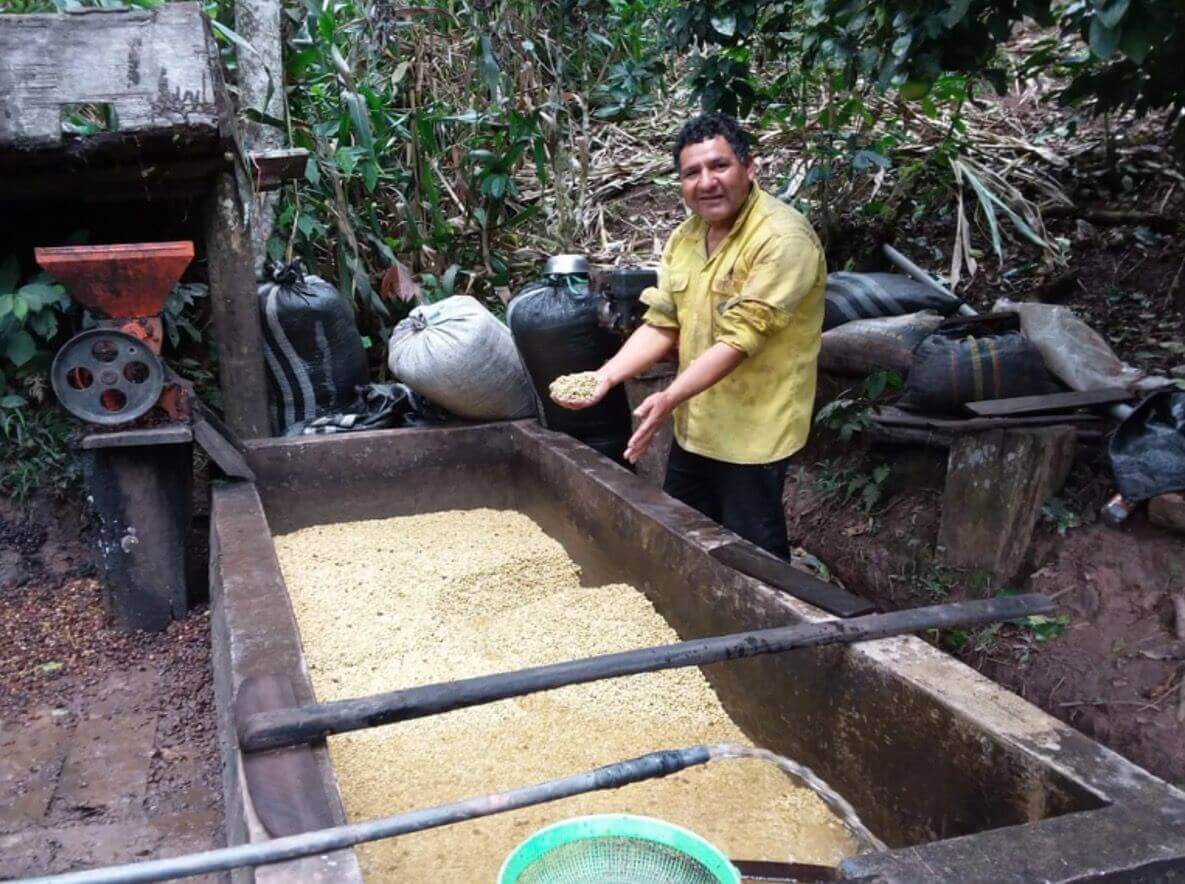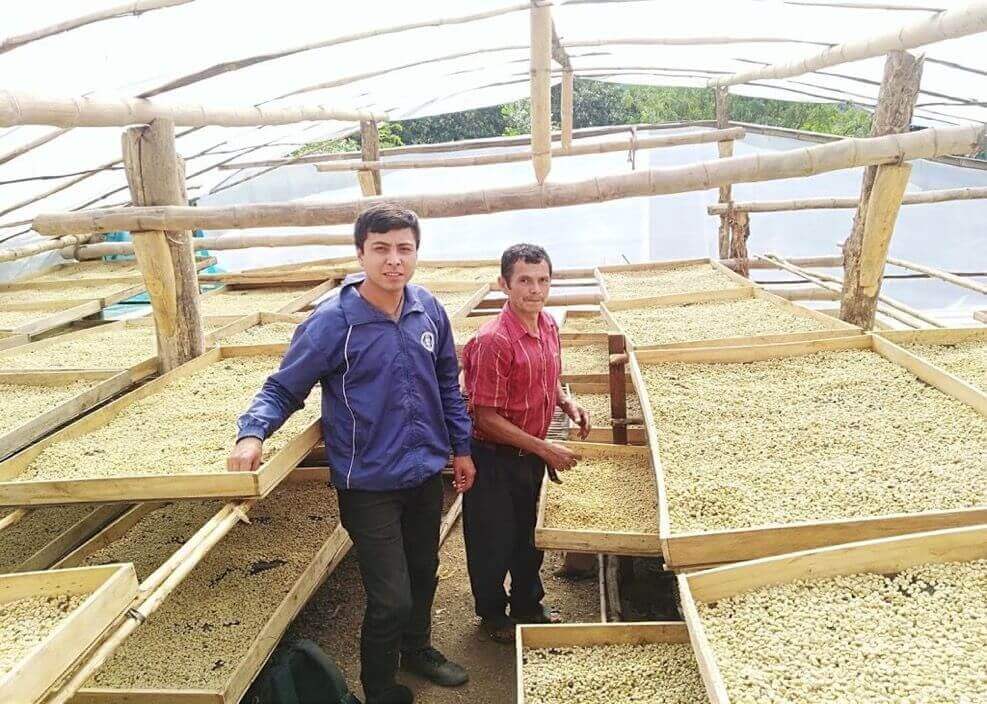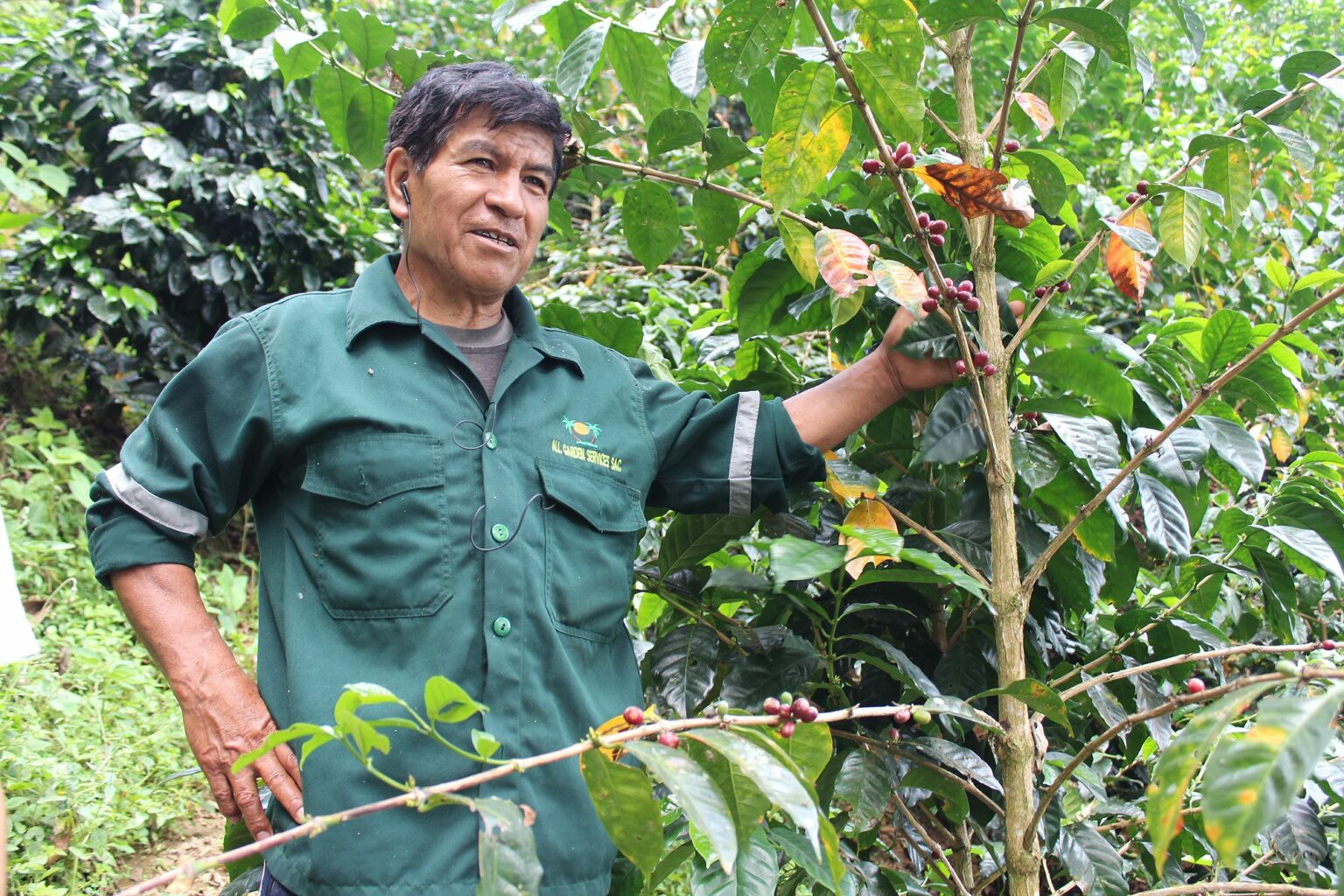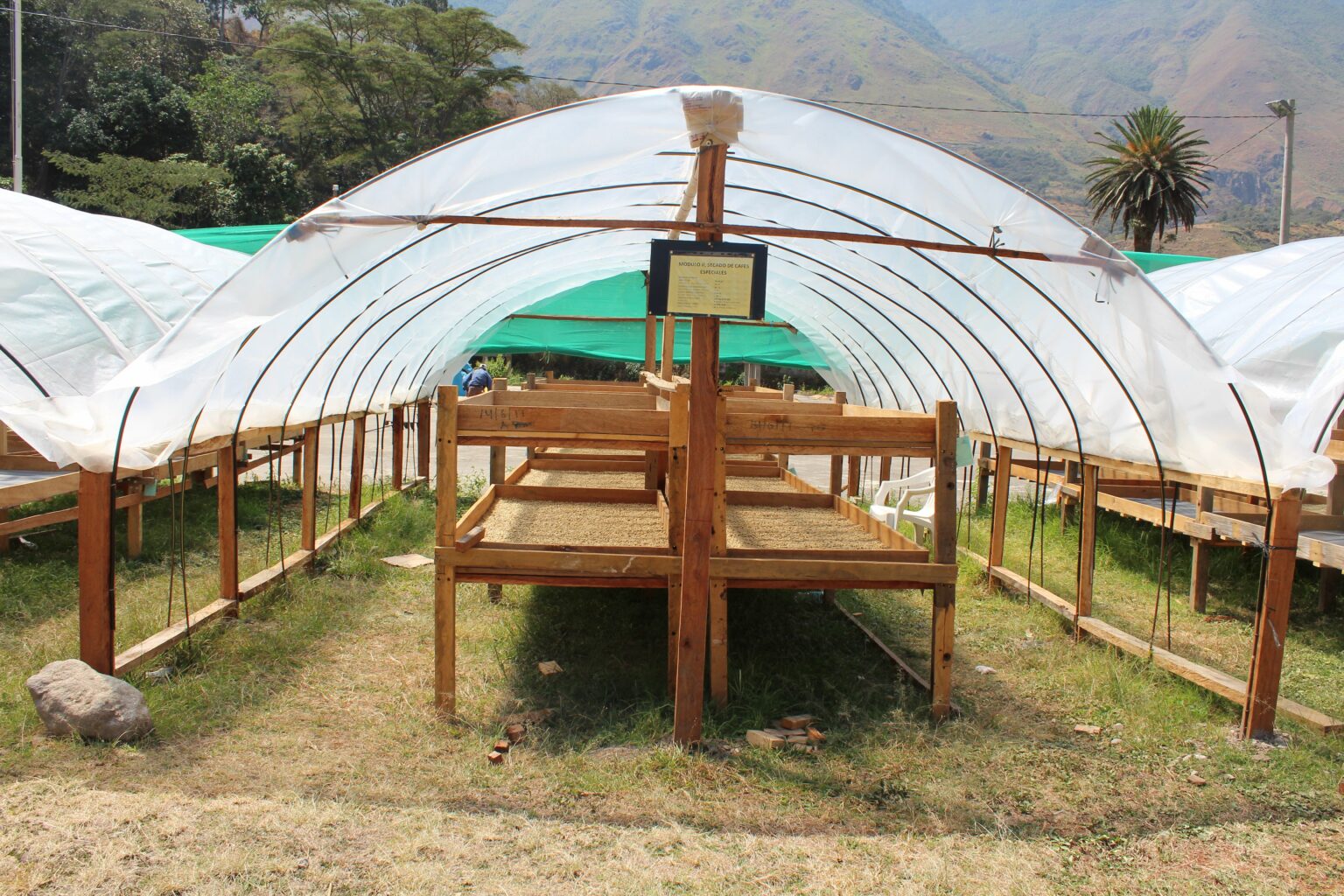Published 09/14/2021
Tailoring Payment Structures to the Needs of a Group
As we’ve discussed in pretty much every one of our previous pieces about paying for coffee, different groups negotiate their pricing structures with different needs and priorities in mind, and our job is to work with them to create a pricing structure tailored to those needs. Two great examples of groups whose needs are taking our pricing structures in new directions are Pangoa in Peru’s Selva Central and Ocumal in Northern Peru’s Amazonas region.
Since the beginning, a core of our focus has been that the prices we pay based on cupping scores are transparent from the outset, and the premise of those structures has always been that as scores go up, the price rises, with the base price for the lowest-scoring tier being a sound price that won’t leave behind producers whose crops are clean, sweet, and bright, but maybe not as nuanced in their flavors. While that’s still the main locus we move from, growing our work with Pangoa and Ocumal has led us into a flatter structure with a higher base price and, in Pangoa’s case, only one tier.

How We Got There
Pangoa
Of all the groups we work with, perhaps none embodies the values of cooperativism better than Pangoa, so it’s no surprise they were the ones to lead us into exploring flatter pay structures as a way to increase pay for the group as a whole.
Some background on this group: led by first-ever woman coop leader in Peru Esperanza Dionisio, we’ve worked together since 2017. Although the group has been around and beautifully managed since 1977, they went through major upheaval through the 80s as a guerilla group called the Shining Path caused massive socio-political upheaval for over a decade, cutting membership by half as families fled to bigger cities. When the political situation stabilized after Shining Path leader Abimael Guzman’s capture in 1992, coop membership also stabilized, now ranging from 680-700 active members registered per year and representing a tightly woven community of farmers. Their core focus on cooperativism helped them protect membership throughout the Covid-19 pandemic, delivering groceries to producers during the lockdown months and continuing to make sure members are safe. Various programs have helped members practice biodynamic farming, grow their own food and medicine, and skill-share. Specific programs help women develop alternate revenue streams and valuable skills. The group also has Education and Health Funds for member families.
Understanding Pangoa’s core focus on cooperativism, it’s easy to see how this group was the one to lead us to a flatter pay structure of one tier only for all coffee that meets our base quality standard. The idea came up in conversations with Pangoa leadership in 2019. We love the coffee we get from them, and the producers who meet the Red Fox quality standards love the higher prices they receive from us, but because Pangoa has other core buyers who pay decent prices for coffees scoring in the low 80s, we weren’t able to catch as much of their volume as we would have liked. Leadership also wanted to encourage more producers to make the Red Fox price and quality jump so they could increase their earnings, and we decided together to increase the base price for all producers meeting our minimum quality standard (which represents the bulk of the coffee we buy from Pangoa anyway) and eliminate higher pricing tiers for higher scores, except in the case of truly exceptional coffees.
Because we only implemented this new system just before Covid hit, it’s not yet possible for us to know how it’s worked out. Last year’s harvest was complicated by Covid restrictions (the coop couldn’t offer their typical service of agronomists who go farm to farm supporting producer needs, detailing prices, and encouraging delivery) so we received less volume, and this year we don’t yet know what final volumes look like, but the elevated C market and increased competition for green coffee across South America will likely mean we don’t net substantially more volume from Pangoa this year either. We do feel confident that it’ll go up in the future, but regardless we’ve seen that exploring a flatter pay structure with this group who so deeply believes in the cooperative as a value system rather than just a way of doing business has been an enriching lesson.

Ocumal
Ocumal’s situation was completely different: rather than coming from a place of relative stability and desired growth, they really needed a shift in how incentives were structured to get through the year. Some background on Ocumal: they’ve been around since 2016 and we’ve been working together since 2019, before which they sold all their coffee for much lower prices to a larger cooperative. Home to about 150 members high up in the Luya district of Peru’s densely forested Amazonas region, Ocumal was founded by Faimer Villar and Freddy Zuta Chavez with the goal of working communally to increase quality and build access to financially sound markets to help the community thrive. They offer dynamic support to members including training and technical assistance on organic production, Fair Trade criteria, harvest and post-harvest best practices, and marketing services.
For Ocumal as a newer and less well-resourced group, they had sold their coffee at much lower prices before we started working together, so they were super happy with the two-tiered structure we had set out before this year. What changed this year was the incredible competitiveness of the green coffee landscape in Peru and the rest of South America with the C market jump and supply disruptions in Colombia and Brazil. In order to make it feasible for members to sell their coffee to Ocumal rather than to passing intermediaries representing multinationals (who arrive with cash in hand paying dramatically elevated prices compared to a normal year) Ocumal had to have extra incentive to offer members in order to make it possible for them to wait. Our goal with Ocumal wasn’t to reward or incentivize a particular type of differentiation, but just to help the group stay solvent through this tough year by raising their base price to a price on par with the high premiums for top scores in previous years and making sure that anyone who makes it to that base tier can stay loyal to the group through this year. While producers win when they can get a high price everywhere they turn, it’s still important to help cooperatives and associations remain solvent so that they can be there to support producers in years when the C market and local market prices are much lower, as we saw in the years leading up to 2020.
The reason we place so much emphasis on high base prices no matter the surrounding circumstances is that in the case of every group, that’s the bulk of what they produce. Ocumal is no exception. Raising the base price and flattening out pricing nets the group more money as a whole. Next year if Ocumal wants to go back to a more tiered system, we will do that, and if this still works best for them, we can plan to do that.

Pros & Cons on Both Sides
For producers, the obvious pro is that when base prices go up and premiums mostly go away for higher scoring tiers, the group makes more because most coffee producers, even in the specialty realm, produce the majority of their coffee in the 84/85 tier. Even if fewer dollars go toward premiums over this base, more money goes to more members, period. This is a pro for us too from an equity standpoint—we want to see more money go to producers.
Another pro for both us and associations is ease. Even though flatter pricing doesn’t change that we cup every individual lot rather than relying on type samples, it still allows us to focus on a simple pass/fail scoring system during the purchasing process. Those results are also easier for producer leaders to communicate outward within their organization and community and eases the confusion or resentment that can occur when a producer nets a premium one year but not the next based on quality (and often unrelated to how hard they worked in production). On our end, it also simplifies lot construction.
On the one hand we have all those pros, but on the other hand, we have the question of whether one flat price for all Red Fox coffee levels would lead to producers not making the extra effort to get past the 84/85 point level, or to resentment from those who do work extra hard to produce higher scoring coffees. Coffees at 86+ level are a staple of specialty coffee, and we love them and want to incentivize their production where we can.
While those pros and cons exist and factor into our thought processes, the main thing to acknowledge is that some groups want a flatter pricing structure, but some have no interest in one. In Oaxaca where we mostly work with small decentralized groups (often extended families or neighborhoods) without formal leadership structures, we’ve seen that as long as base prices are high enough to make coffee production a valuable trade, some love the friendly competition of getting premiums for higher cup scores, while some prefer for everyone in the group to make the same amount if their coffee meets our base quality standard. In these cases, our shared goals with Pangoa and Ocumal’s specific needs this year led us to a shift in how we pay for coffee with those groups. The key isn’t any one structure, it’s letting groups’ needs lead the way to an incentive structure they like and benefit from.

Producer Groups’ Needs Should Lead the Way on Pricing Structures
As pricing and competition dynamics shift and change from year to year, it’s important to approach producer groups with the energy of carrying over the dedication and investment from prior years but being sensitive to their changing needs. Just like we as people have different needs for the incentives that motivate us, and just like our working relationships work best when we have a say in how our needs are met, sourcing relationships should also be built and maintained in acknowledgement of producers’ and associations’ changing needs over time. As we continue to grow and develop relationships with a diverse array of producer associations and cooperatives, our work is to let their needs inform the shared incentives we create together.
| Interested in sourcing coffee with us? Reach out at info@redfoxcoffeemerchants.com. To learn more about our work, check out our journal and follow us on Instagram @redfoxcoffeemerchants, Twitter @redfoxcoffee, Spotify, and YouTube. |
